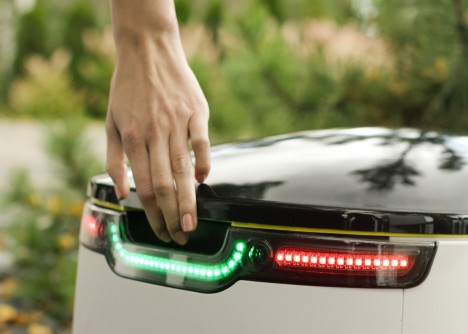 |
Canon has introduced the CR-S700R, a ‘Robotic Camera System’ that allows operators to wirelessly zoom, pan, tilt and roll select EOS cameras for composing and capturing still image photography.
The system, which Canon suggests is designed for ‘sports photography and news media,’ pairs with the CR-G100 camera controller and works alongside Canon’s CR-A100 Camera Remote Application to ‘to control multiple cameras from a PC, display live-view images and remotely trigger a camera or simultaneously shoot with multiple cameras.’
 |
No measurements are given, but based on the images, it’s clear this machine is large, as it manages to make an EOS 1-series body and 70–200mm F2.8 lens look small when attached. Canon says the system can follow ‘high-speed subjects and features a turning radius of up to 260mm.’
 |
| Canon IP camera controller CR-G100 |
At the time, the system only supports the 1D X Mark II and 1DX Mark III cameras when used with the following lenses:
- EF 11–24mm F4L USM
- EF 16–35mm F2.8L III USM
- EF 24–70mm F2.8L II USM
- EF 70–200mm F2.8L IS II USM
- EF 24–105mm F4L IS II USM
- EF 100–400mm F4.5–5.6L IS II USM
Based on the sole screenshot of the Camera Remote Application CR-A100 Canon has provided, it appears as though operators will be able to control over a dozen cameras at once, with the ability to edit nearly every setting the camera has to offer. There are even preset buttons, suggesting it’ll be possible to remotely capture multiple pre-composed shots with the click of a button.
 |
While Canon surely expects other use-cases, the CR-S700R looks like the perfect system to use during this year’s 2020 Summer Olympic Games. Remote cameras are consistently used during Olympic events and having the ability to reposition and remotely control every aspect of the camera seems like a no-brainer for sports photographers and news agencies who want to get the best shots possible.
The Robotic Camera System CR-S700R and the Camera Remote Application CR-A100 are scheduled to be available ‘from mid-February 2020,’ according to Canon.
Press release:
Canon Introduces The CR-S700R Robotic Camera System Enabling The Remote Operation Of Select EOS Cameras And Lenses*
MELVILLE, NY, January 6, 2020 – Sports photography and news media require the use of remote photography extensively to capture still images from various viewpoints or angles that may not be achieved with conventional photography methods. Canon U.S.A. Inc., a leader in digital imaging solution, today announced the release of the Canon Robotic Camera System CR-S700R, a remote-control system for still image shooting. This system was developed to meet the needs of professional photographers to operate cameras remotely to shoot still images for the media and further represents Canon’s continued commitment to deliver convenient solutions.
The Canon Robotic Camera System CR-S700R revolves around a remote pan head that can be used to remotely control and shoot still images using a compatible EOS camera and lens*. This system includes a small and lightweight gateway box: the IP camera controller CR-G100. The CR-A100 Camera Remote Application (sold separately) enables users to control multiple cameras from a PC, display live-view images, and remotely trigger a camera or simultaneously shoot with multiple cameras.
Bring New Viewpoints for Professional Press and Sports Photographers
By using a center-type mechanism that rotates around a central axis perpendicular to the optical axis of the lens, the remote pan head can perform operations such as zooming, panning, tilting, and rolling of the attached camera in a small footprint with minimal shifting of weight and balance. The remote-control solution can be ideal to follow high-speed subjects and features a turning radius of up to 260mm. The focus on still image capture has made it possible to achieve a more compact and lightweight design, while the IP camera controller CR-G100 helps eliminate complicated and bulky wired connections, meaning one person can operate multiple cameras. The PC software (licensed with the Robotic Camera System CR-S700R) is also available separately to control a camera using the IP camera controller CR-G100, streamlining the workflow of still image shooting at the news site.
Availability
The Robotic Camera System CR-S700R and the Camera Remote Application CR-A100 are scheduled to be available from mid-February 2020**. For more information, please contact your local Canon pro-market representative or regional sales manager.
† Based on weekly patent counts issued by United States Patent and Trademark Office.
* Compatible cameras are the EOS-1D X Mark II and EOS-1D X Mark III. Compatible interchangeable lenses are EF 11-24mm F4L USM, EF 16-35mm F2.8L III USM, EF 24-70mm F2.8L II USM, EF 70-200mm F2.8L IS II USM, EF 24-105mm F4L IS II USM, and EF 100-400mm F4.5 -5.6L IS II USM.
** Availability and specification are subject to change without notice.
Articles: Digital Photography Review (dpreview.com)



















































You must be logged in to post a comment.